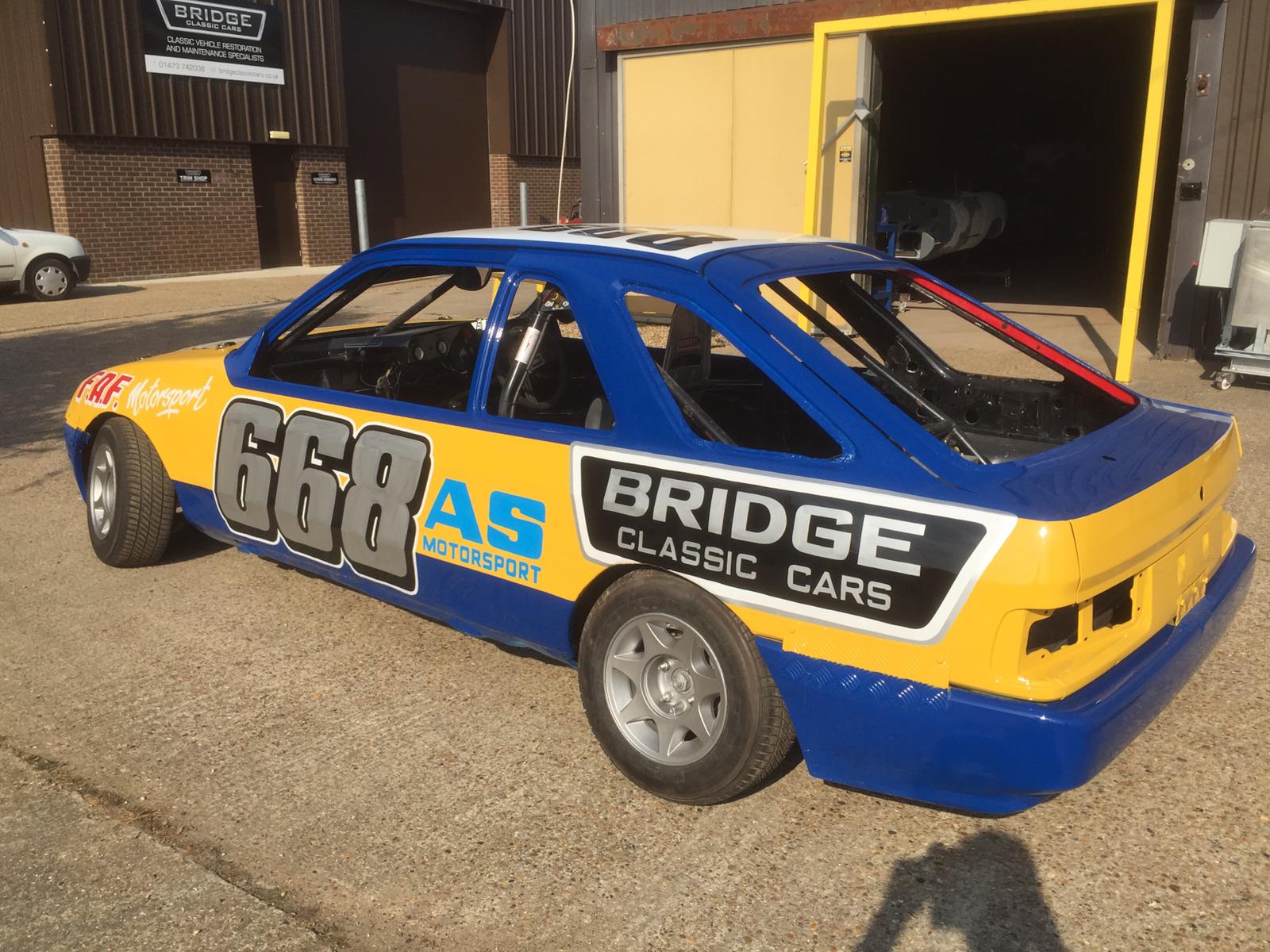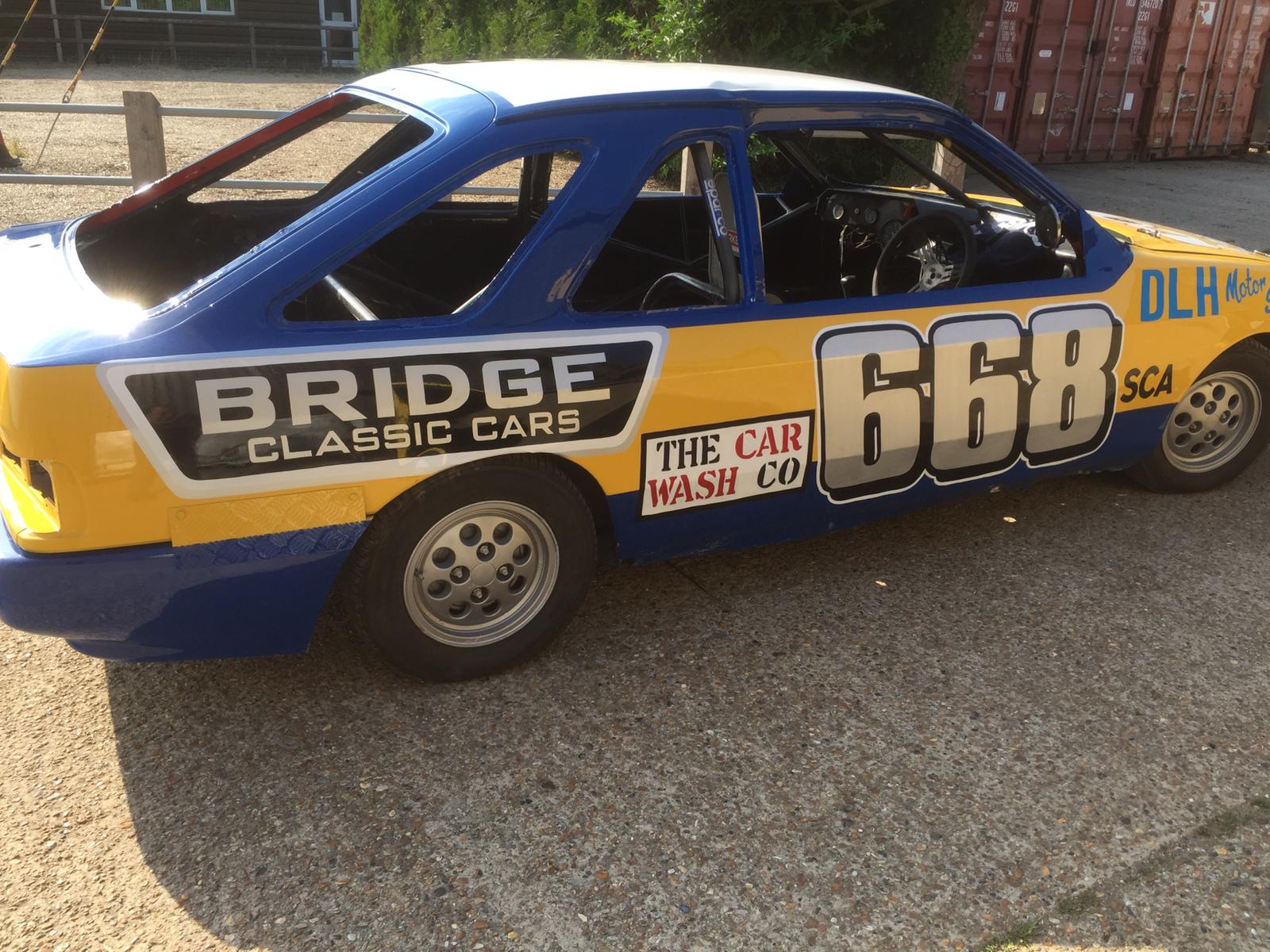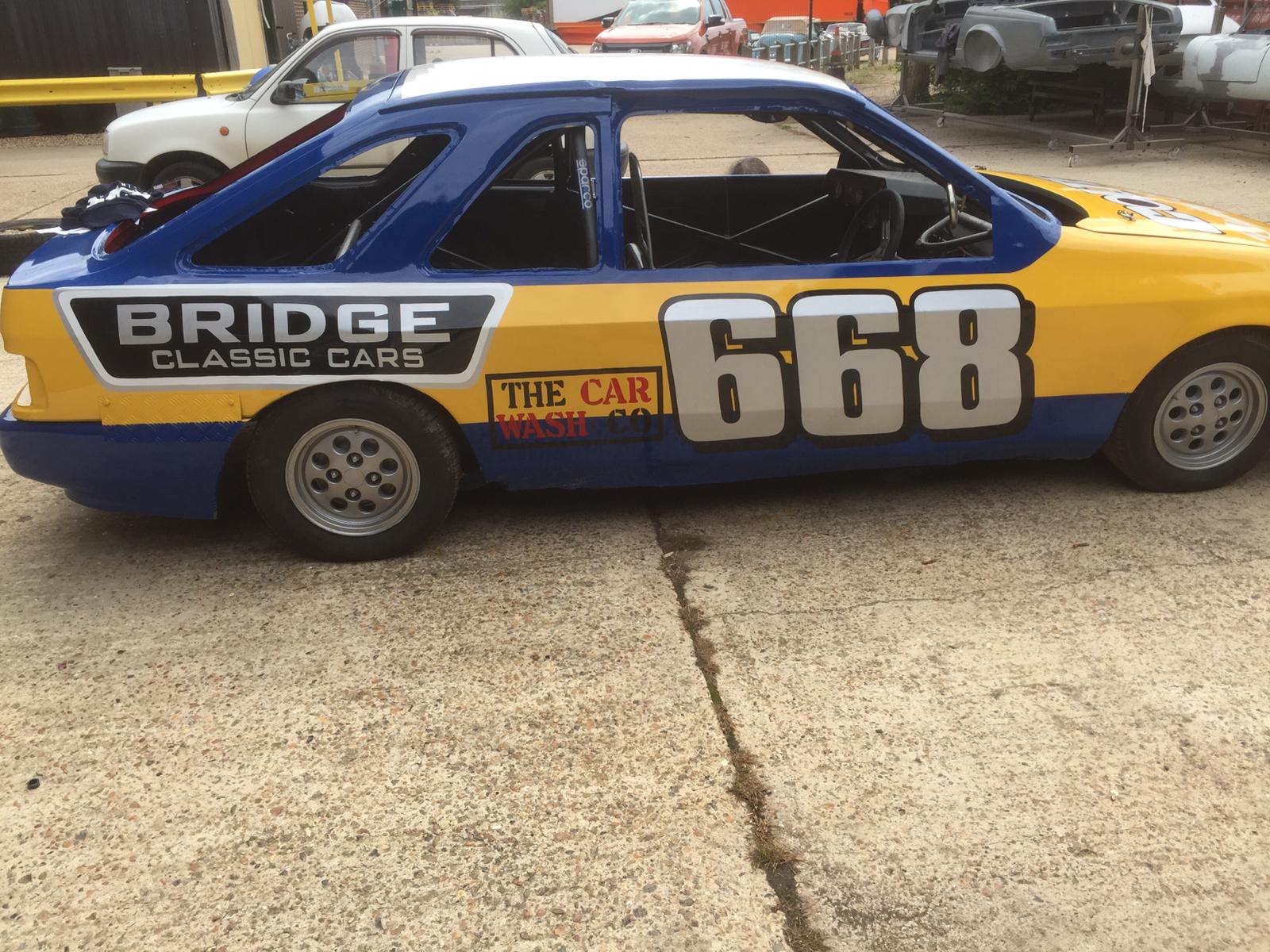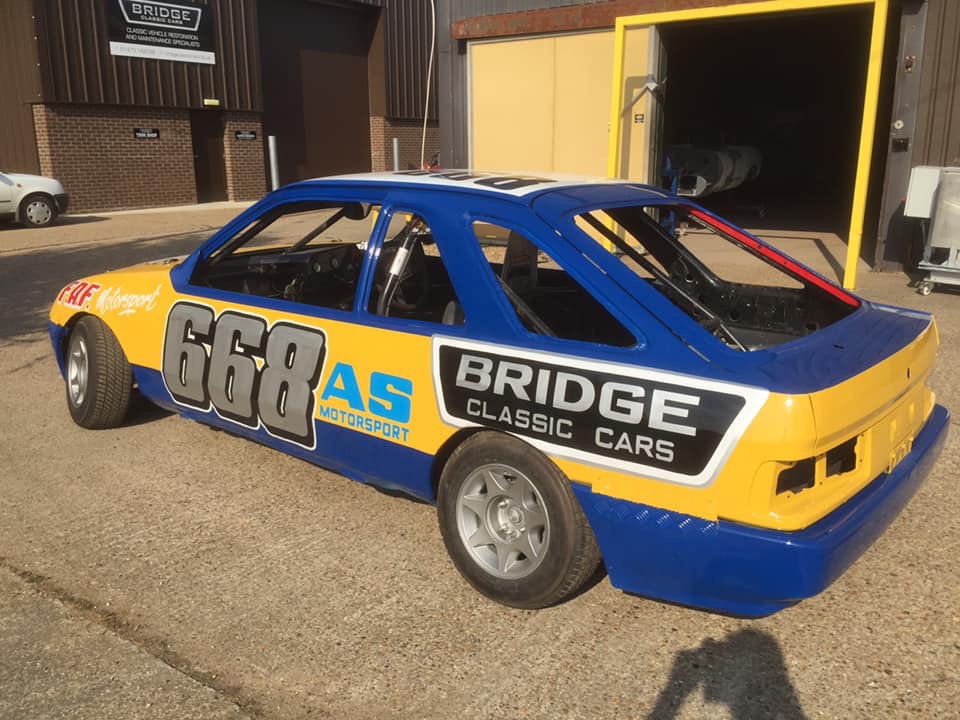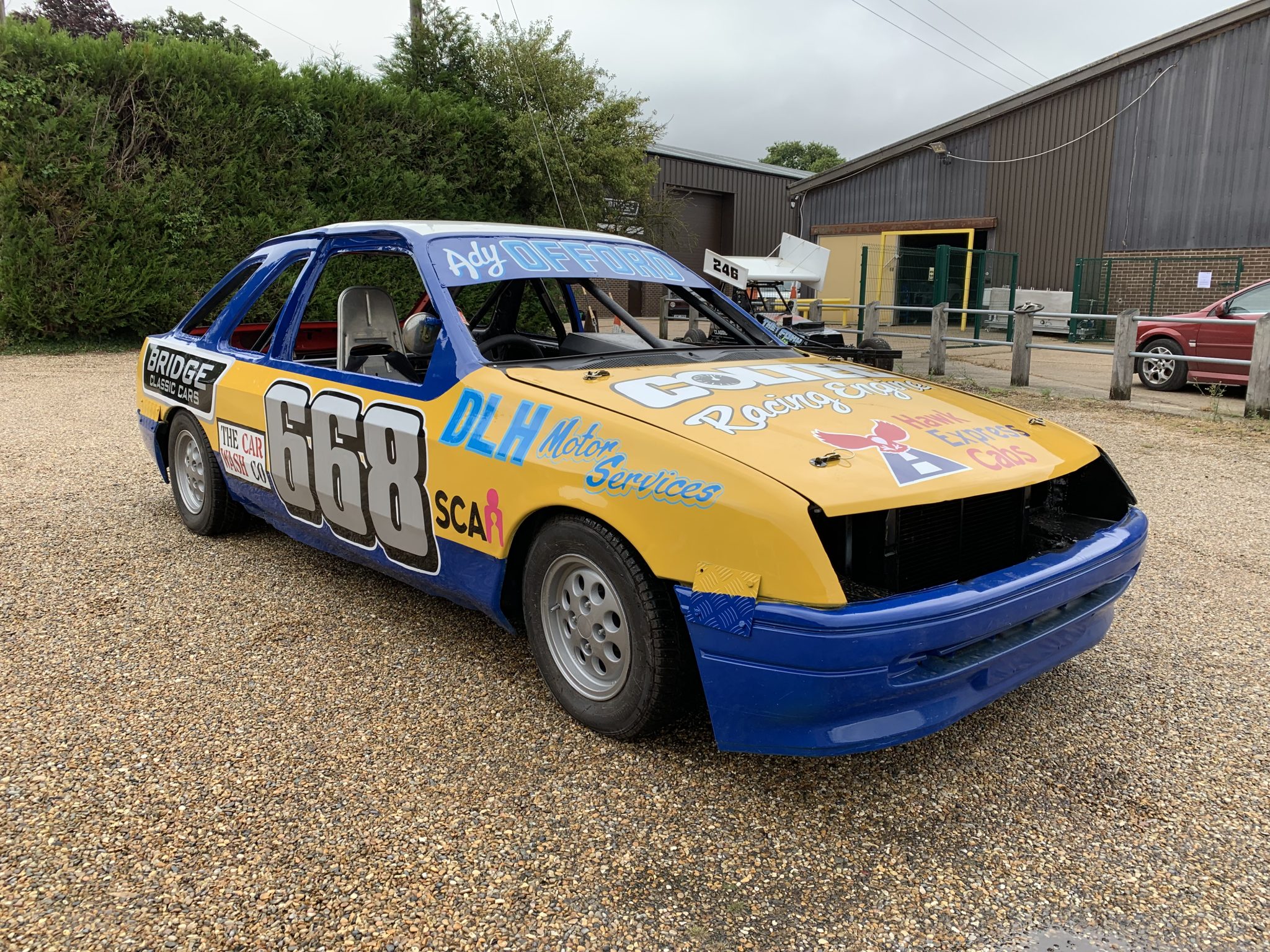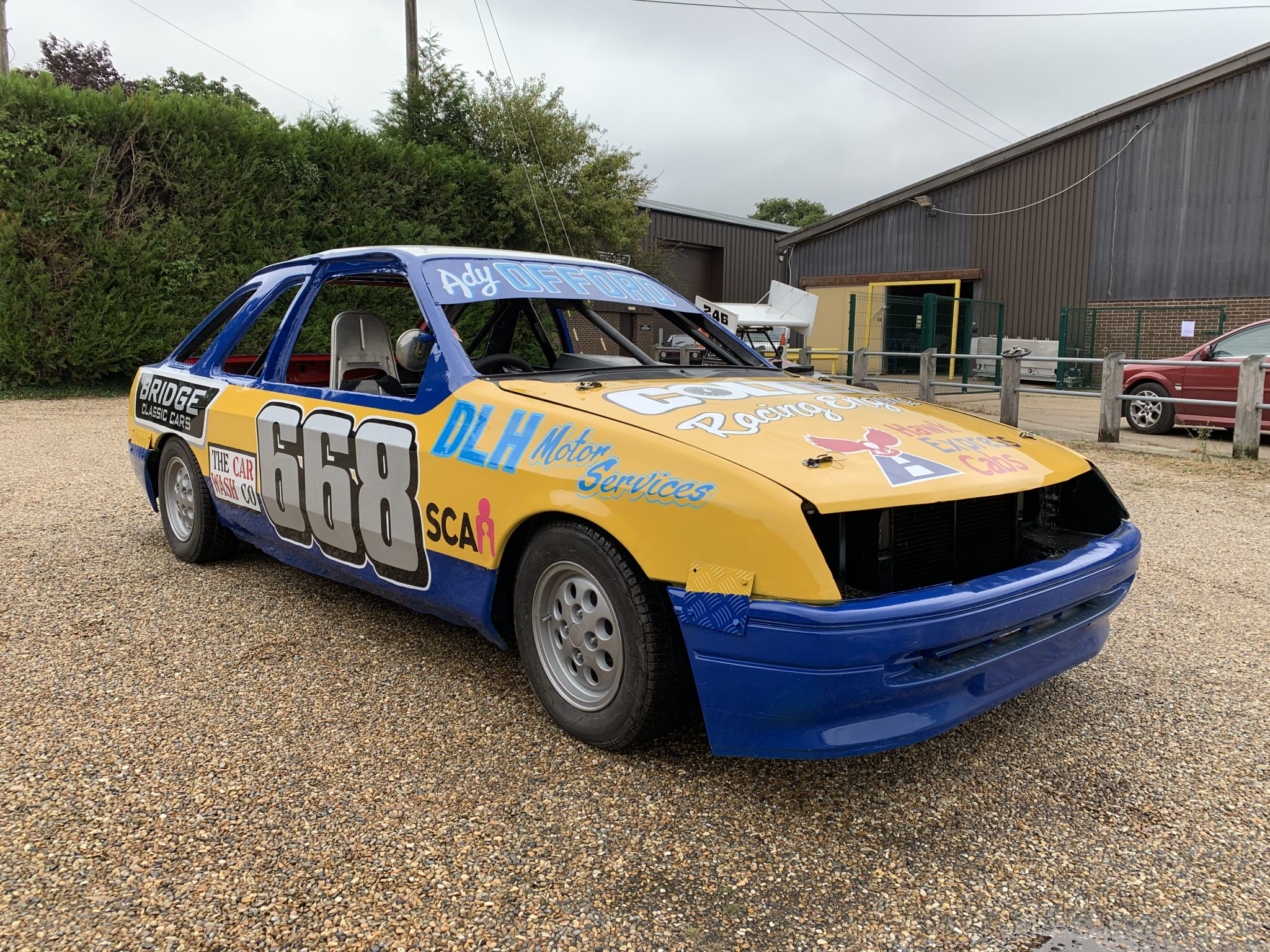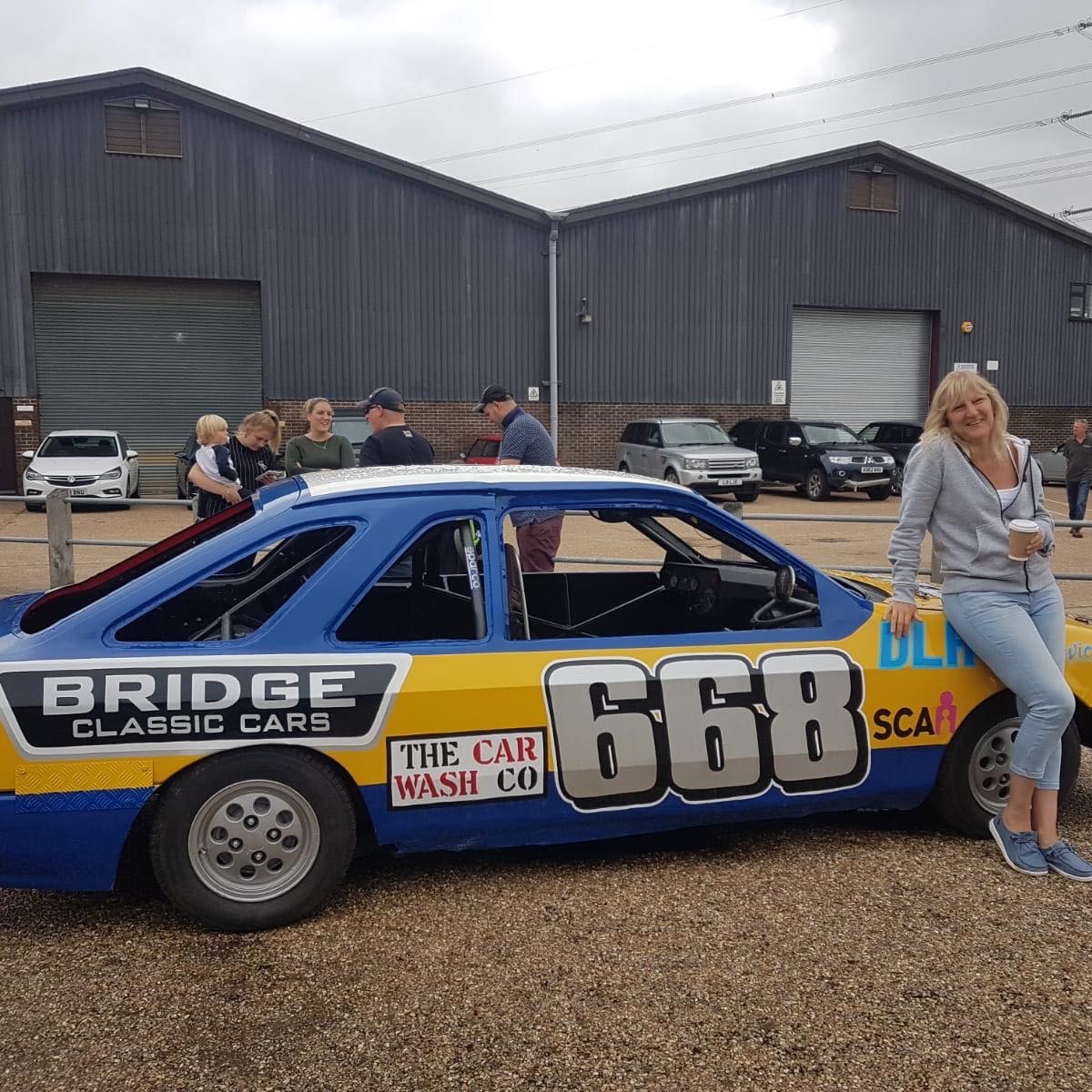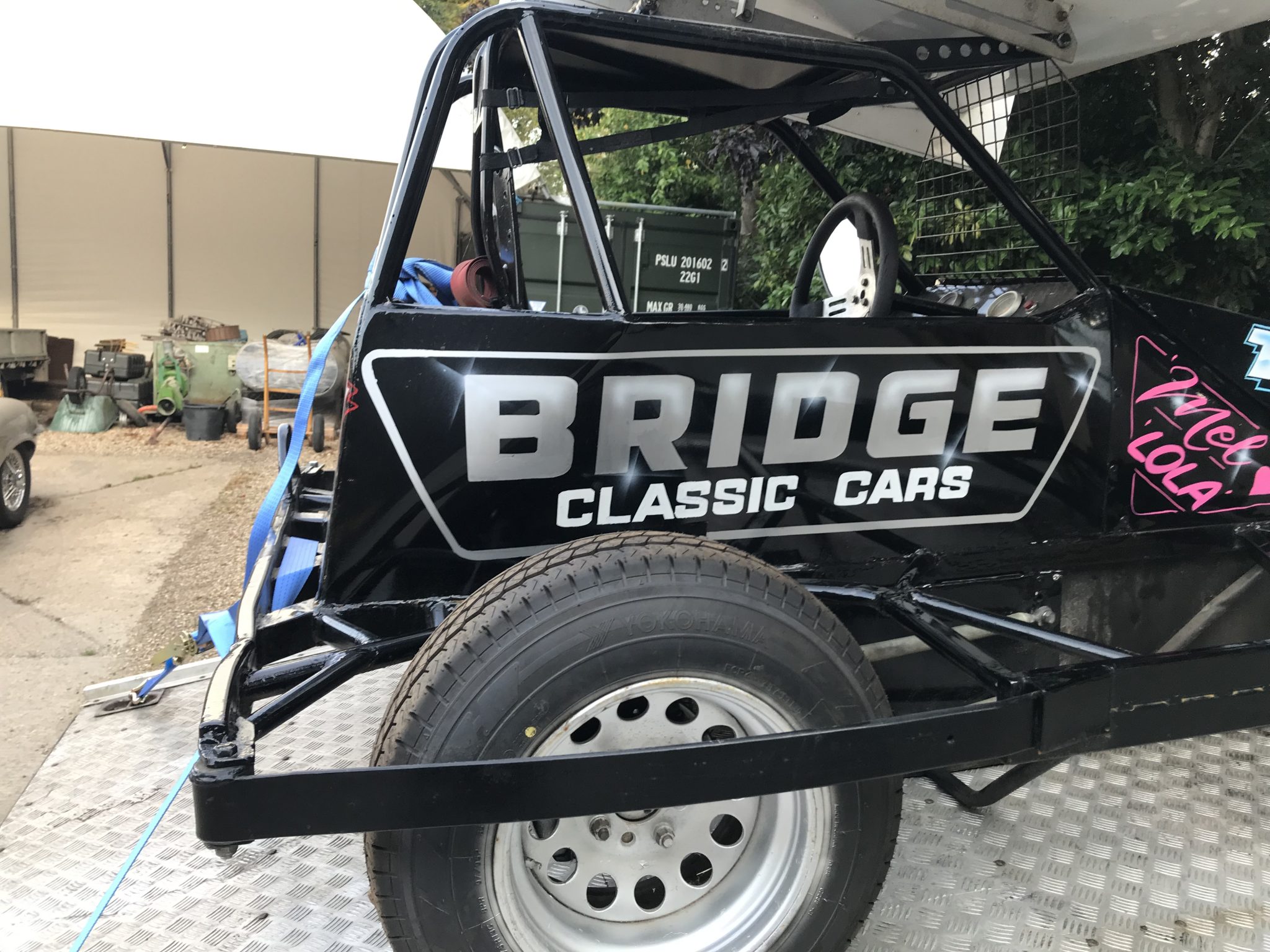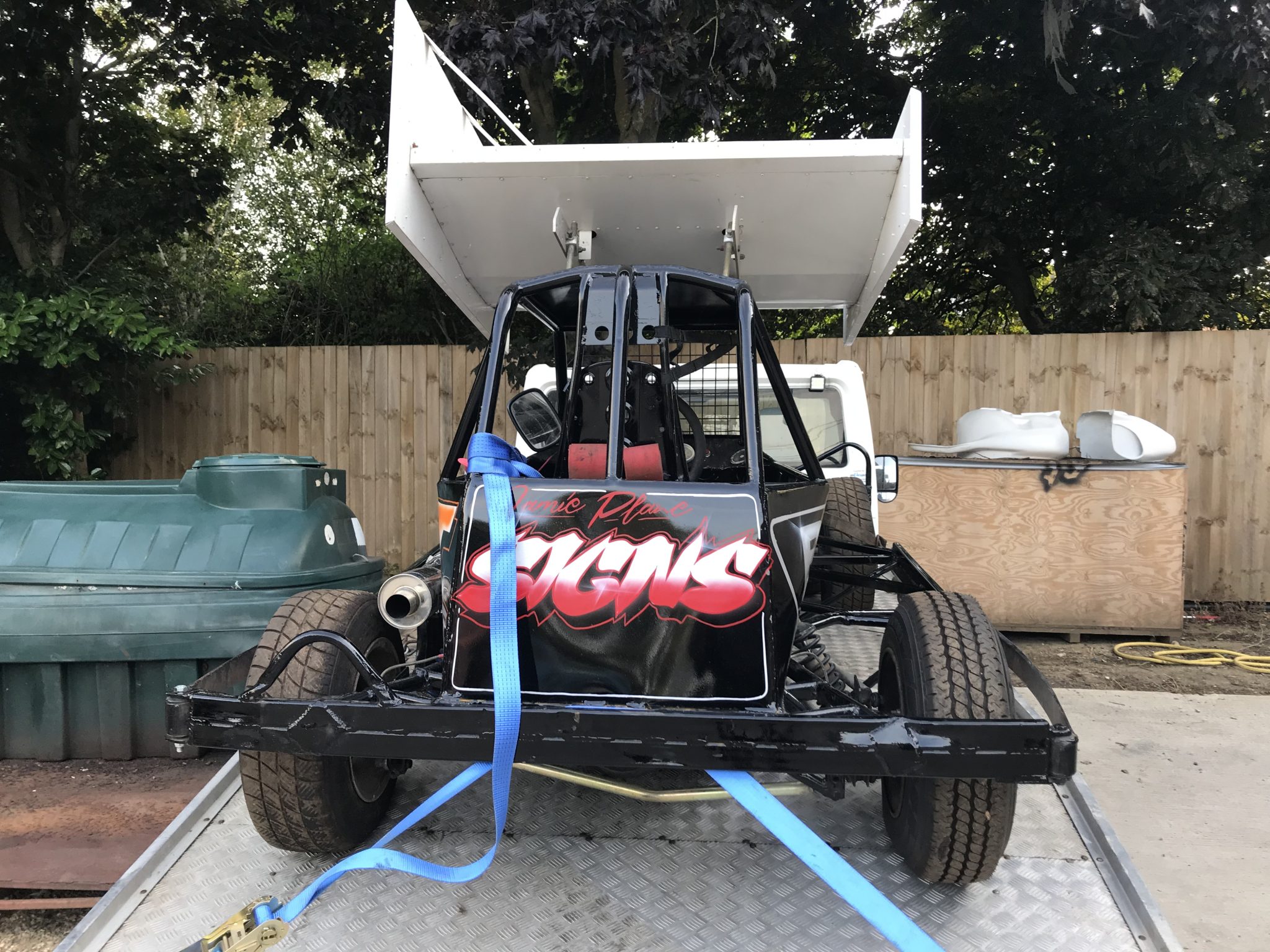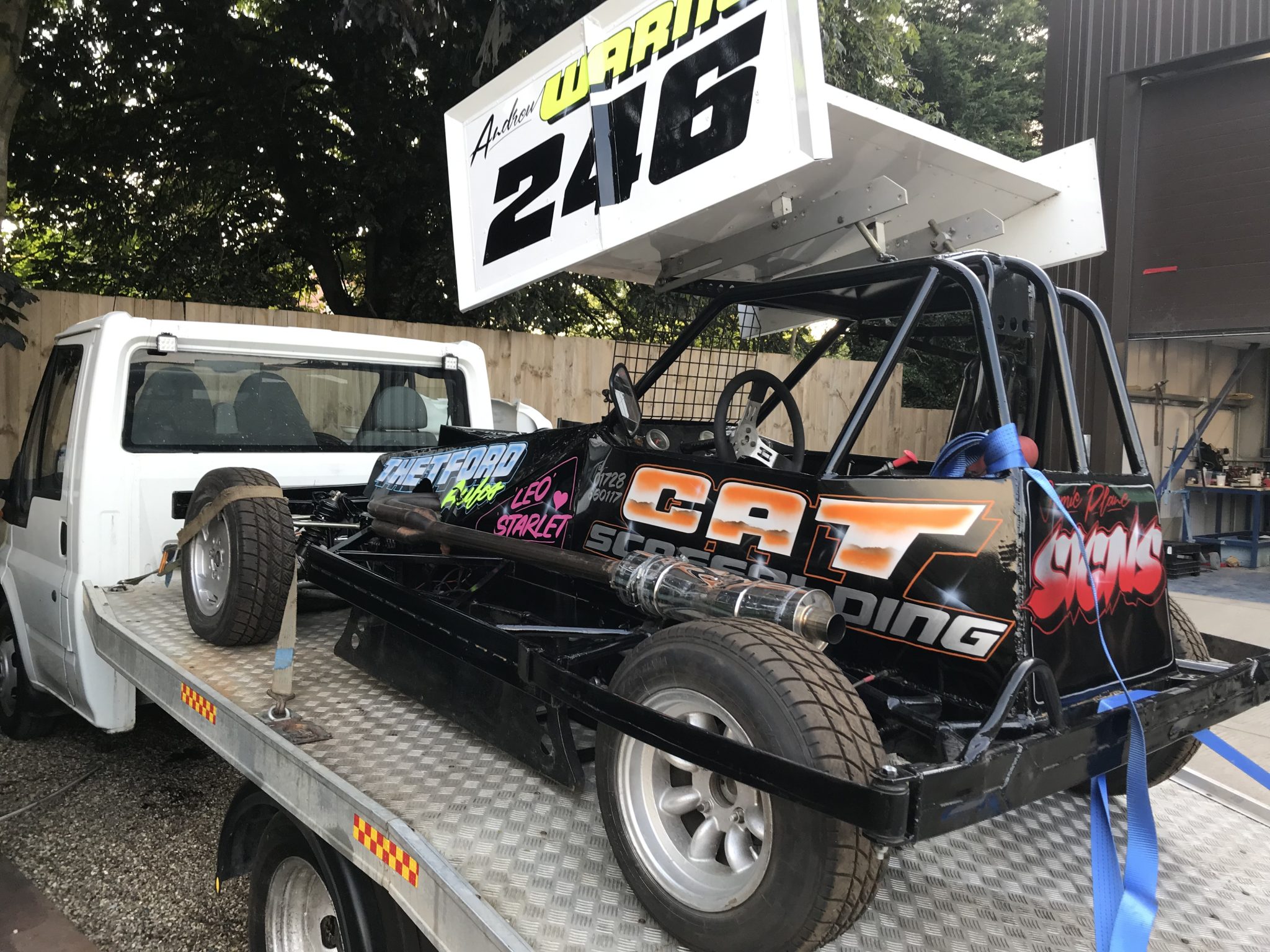Managing Director – Bridge Classic Cars
Our boys Ady and Andrew are keeping themselves busy of their time away from the workshops preparing their race cars for some upcoming events.
Ady has just completed the body and paintwork on his Spedeworth Formula Lightning Rod with the 2 Litre Ford Pinto Engine.
Source: Spedeworth Motorsports
“The Ford Sierra may have all but disappeared from Britain’s roads but on the ovals they live on in the rear-wheel-drive Lightning Rods.
This formula offers old-school side by side non-contact racing, with high speeds and spectacular tail-slides guaranteed from these experienced drivers. Many drivers come into the formula after competing in contact classes so they have the skill and competitive nature to put on an excellent show every time.
Drivers from across the UK and Ireland travel to Spedeworth/Incarace’s raceways on a regular basis to take on the stars of the ovals, and tight NASCAR-style battles have become a common feature of Lightning Rod meetings.
The highlights of the Spedeworth/Incarace calendar are the annual National Championship Weekend staged over three days at Hednesford Hills Raceway and the two day Spedeweekend spectacular held at Foxhall Heath Stadium, Ipswich which will be the stage for the 2015 World Championship.
The Lightning Rods can be seen at all Spedeworth and Incarace operated tracks over the year.”
Andrew is also looking to return to the track in his BriSCA F2.
A brief history of BriSCA F2 Stock Car racing.
Junior Tens racing was introduced to the short oval raceways of the UK in August 1960, they were designed to offer the working man a chance of Stock Car racing without the prohibited expense of trying to run against the big spenders in the Senior Stock Car class.
Junior Tens became Juniors and then were eventually renamed BriSCA Formula Two Stock Cars, and the Senior Stock Cars are what we today call BriSCA Formula One Stock Cars.
The growth of BriSCA Formula Two Stock Cars during the 1960’s was astonishing, with tracks opening in various parts of the country, with the South West becoming a particular stronghold of the sport.
During the 1970’s dramatic modernisation of the sport took place, which saw the racing become limited to the South West, before the sport went nationwide again in the late 1970’s, before being reintroduced to Scotland in 1981.
Near year on year growth in the driver ranks now sees BriSCA F2 racing as the largest open wheeled Stock Car sport in the country with nearly six hundred registered drivers, and tracks that span from Aberdeenshire in Scotland right down the to the South West of England, touching base in the North East, Lancashire, Yorkshire, The Midlands, the East Coast region, and the South East.
There are several main manufacturers of BriSCA F2’s, but drivers can build their own cars if they wish, as long as they comply with the strict construction rules.
Unlike big circuit racing, Stock Car racing sees the stars of the sport start at the rear of the grid; to win they have to force themselves through the grids of cars with use of the front bumper being allowed. It is a contact sport, but out and out wrecking tactics are not allowed.

